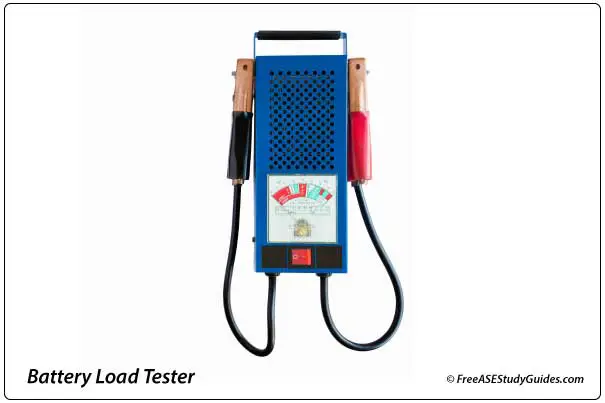Battery Capacity Test

Perform a battery capacity test to determine the starting condition of an automotive battery. The battery contains six cells connected in series. Each of these six cells produces 2.1 volts. Therefore, wiring these cells in series equals the 12.6 volts required by the electrical system.

Use current capacity ratings to measure a battery's readiness to deliver cranking power to the starter motor and reserve energy for the electrical system.
CCA: The cold-cranking amps or cold-cranking rating determines the load or amperage a 12-volt battery can deliver for 30 seconds at 0° F without falling below 7.2 volts. CCA is the term used to determine the battery's capacity.
RC: The battery's reserve capacity indicates the number of minutes it takes for a fully charged battery, discharged at 25 amperes, to drop below 10.5 volts.
AH: The ampere-hour rating measures the steady current a battery can supply for 20 hours at a specific amperage at 80° F without cell voltage falling below 1.75 volts.
Battery Load Test


Perform a battery load test to see if service or replacement is necessary. First, determine the load by retrieving the CCA from the battery case and reducing this number by half. Apply this load for 15 seconds. The battery's voltage must remain above 9.6 volts at 70° F. It's relative to temperature; the lower the temperature, the lower the voltage.